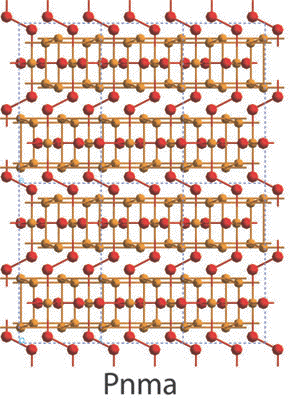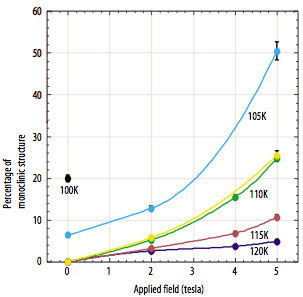D2B
High-resolution two-axis diffractometer
Magnetism chills out
Neutron powder diffraction is especially good at magnetic structure determination. This is illustrated here by the study of materials that behave as magnetic refrigerants.
When a magnetic field is applied to a magnetic material, the constituent magnetic moments align, and the material warms up. When the field is switched off, the moments become disorderly again and the material cools. In certain alloys, this magnetocaloric effect is substantial – large enough to suggest a novel type of refrigeration based on cycling the magnetic field-switching and allowing the heat given off to escape. Companies are already interested in applying this environmentally-friendly technology to air-conditioning and supermarket chillers.
The familly of the R5(Si1-xGex)4 compounds present a giant magnetocaloric effect. The extent of this magnetocaloric effect is believed to depend on an intimate coupling between the material’s crystal structure and its magnetism. X-ray and magnetisation measurements on Tb5Si2Ge2 indicate that, as the temperature drops, a strong magnetic moment appears alongside a change in crystal structure from monoclinic (M) to orthorhombic (O1) (fig. 1).
Neutrons studies on D2B showed that, contrary to the expectations, applying a field as high as 5 tesla induced only a partial transition from the monoclinic to the orthorhombic structure (fig. 2). The interplay between crystal structure and magnetic properties is more complex than previously thought. Neutron studies are the only way that could distinguish between the two magnetic phases.
Ref.: "Observation of a Griffiths-like phase in the magnetocaloric compound Tb5Si2Ge2", Magen C., Algarabel P.A., Morellon L., Araujo J.P., Ritter C., Ibarra M.R., Pereira A.M., Sousa J.B., Phys. Rev. Letters 96, 167201-1-167201-4 (2006)


